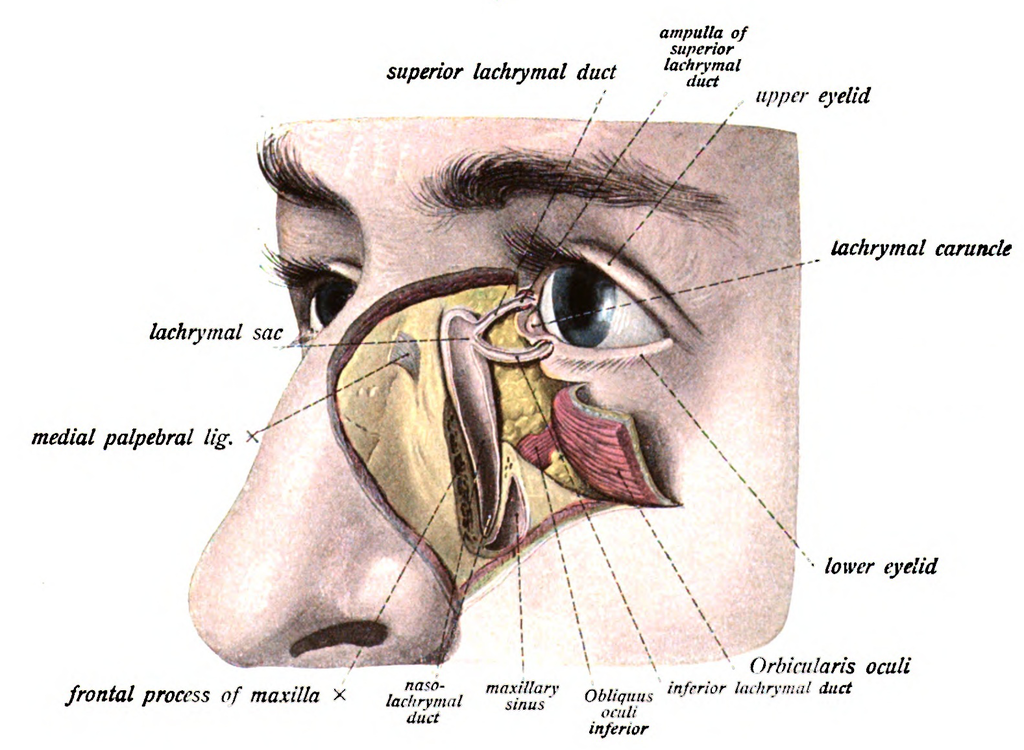[1]
Tamboli DA, Harris MA, Hogg JP, Realini T, Sivak-Callcott JA. Computed tomography dimensions of the lacrimal gland in normal Caucasian orbits. Ophthalmic plastic and reconstructive surgery. 2011 Nov-Dec:27(6):453-6. doi: 10.1097/IOP.0b013e31821e9f5d. Epub
[PubMed PMID: 21659915]
[2]
Matsumoto H, Matsumoto A. An Unusual Case of Nasolacrimal Obstruction Caused by Foodstuffs. Case reports in ophthalmology. 2015 Sep-Dec:6(3):307-10. doi: 10.1159/000439425. Epub 2015 Sep 4
[PubMed PMID: 26483673]
Level 3 (low-level) evidence
[3]
Yazici A, Bulbul E, Yazici H, Sari E, Tiskaoglu N, Yanik B, Ermis S. Lacrimal Gland Volume Changes in Unilateral Primary Acquired Nasolacrimal Obstruction. Investigative ophthalmology & visual science. 2015 Jul:56(8):4425-9. doi: 10.1167/iovs.15-16873. Epub
[PubMed PMID: 26193918]
[4]
Bewes T, Sacks R, Sacks PL, Chin D, Mrad N, Wilcsek G, Tumuluri K, Harvey R. Incidence of neoplasia in patients with unilateral epiphora. The Journal of laryngology and otology. 2015 Jul:129 Suppl 3():S53-7
[PubMed PMID: 26173845]
[5]
Ducasse A, Arndt C, Brugniart C, Larre I. [Lacrimal traumatology]. Journal francais d'ophtalmologie. 2016 Feb:39(2):213-8. doi: 10.1016/j.jfo.2015.10.002. Epub 2016 Feb 1
[PubMed PMID: 26847220]
[6]
Sharma HR, Sharma AK, Sharma R. Modified External Dacryocystorhinostomy in Primary Acquired Nasolacrimal Duct Obstruction. Journal of clinical and diagnostic research : JCDR. 2015 Oct:9(10):NC01-5. doi: 10.7860/JCDR/2015/15940.6624. Epub 2015 Oct 1
[PubMed PMID: 26557549]
[7]
Wang W, Zhan X, Qiang H, Cheng Z. [Efficacy of endoscopic nasal lateral wall dissection approach in the treatment of maxillary sinus diseases]. Lin chuang er bi yan hou tou jing wai ke za zhi = Journal of clinical otorhinolaryngology, head, and neck surgery. 2015 Jun:29(12):1075-7
[PubMed PMID: 26513994]
Level 2 (mid-level) evidence
[8]
Balaji SM. Management of nasolacrimal duct injuries in mid-facial advancement. Annals of maxillofacial surgery. 2015 Jan-Jun:5(1):93-5. doi: 10.4103/2231-0746.161092. Epub
[PubMed PMID: 26389043]
[9]
Yildirim Y, Kar T, Ayata A, Topal T, Çeşmeci E. Endoscopic endonasal dacryocystorhinostomy with ostial stent intubation following nasolacrimal duct stent incarceration. Current eye research. 2015:40(12):1292-3. doi: 10.3109/02713683.2015.1038358. Epub 2015 Sep 14
[PubMed PMID: 26367815]
[10]
Transection of Nasolacrimal Duct in Endoscopic Medial Maxillectomy: Implication on Epiphora., Imre A,Imre SS,Pinar E,Ozkul Y,Songu M,Ece AA,Aladag I,, The Journal of craniofacial surgery, 2015 Oct
[PubMed PMID: 26468843]


